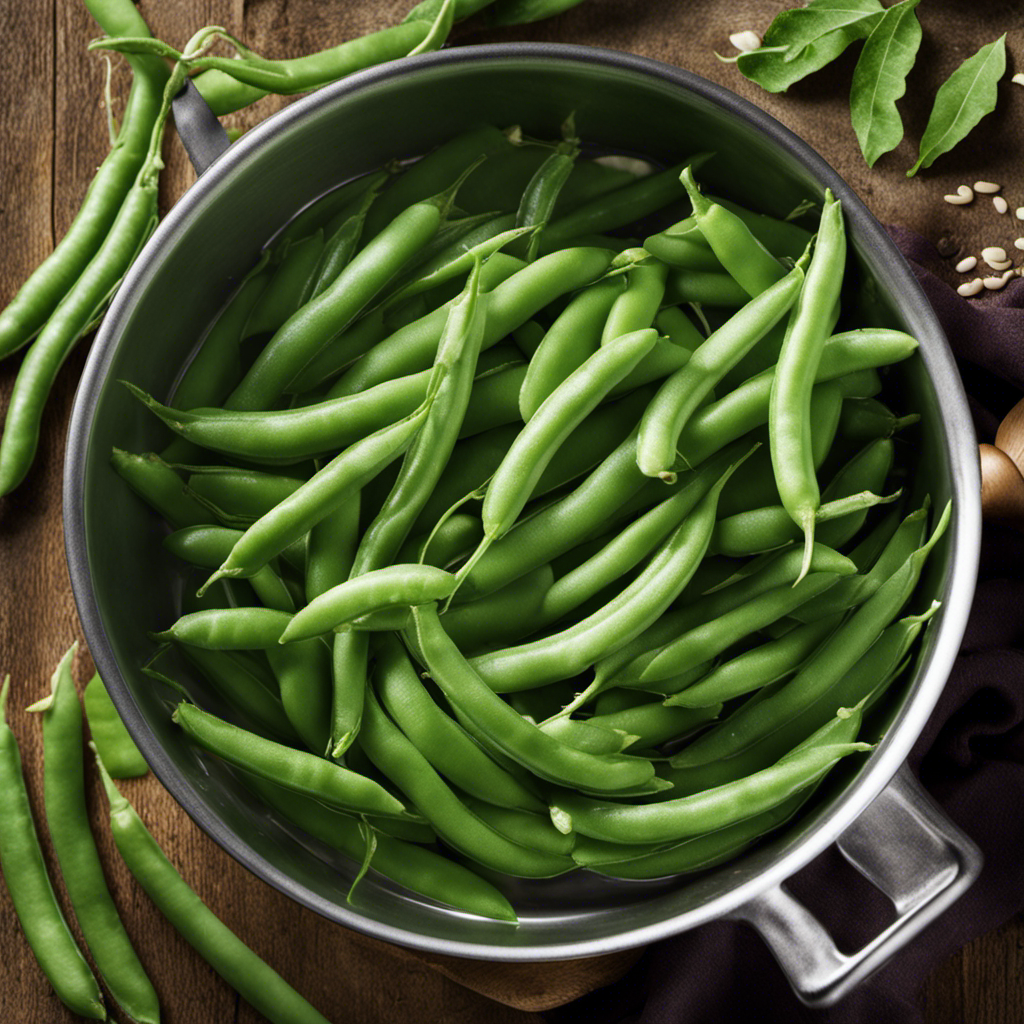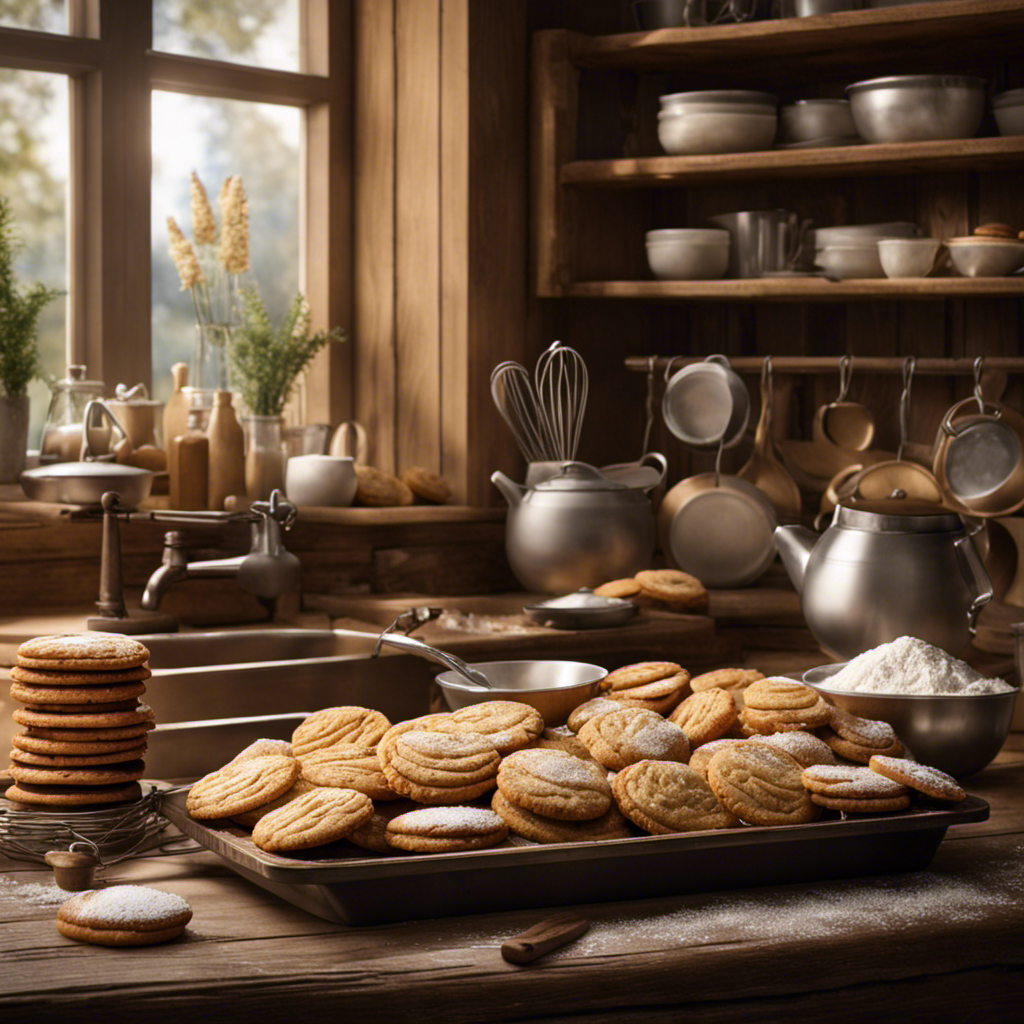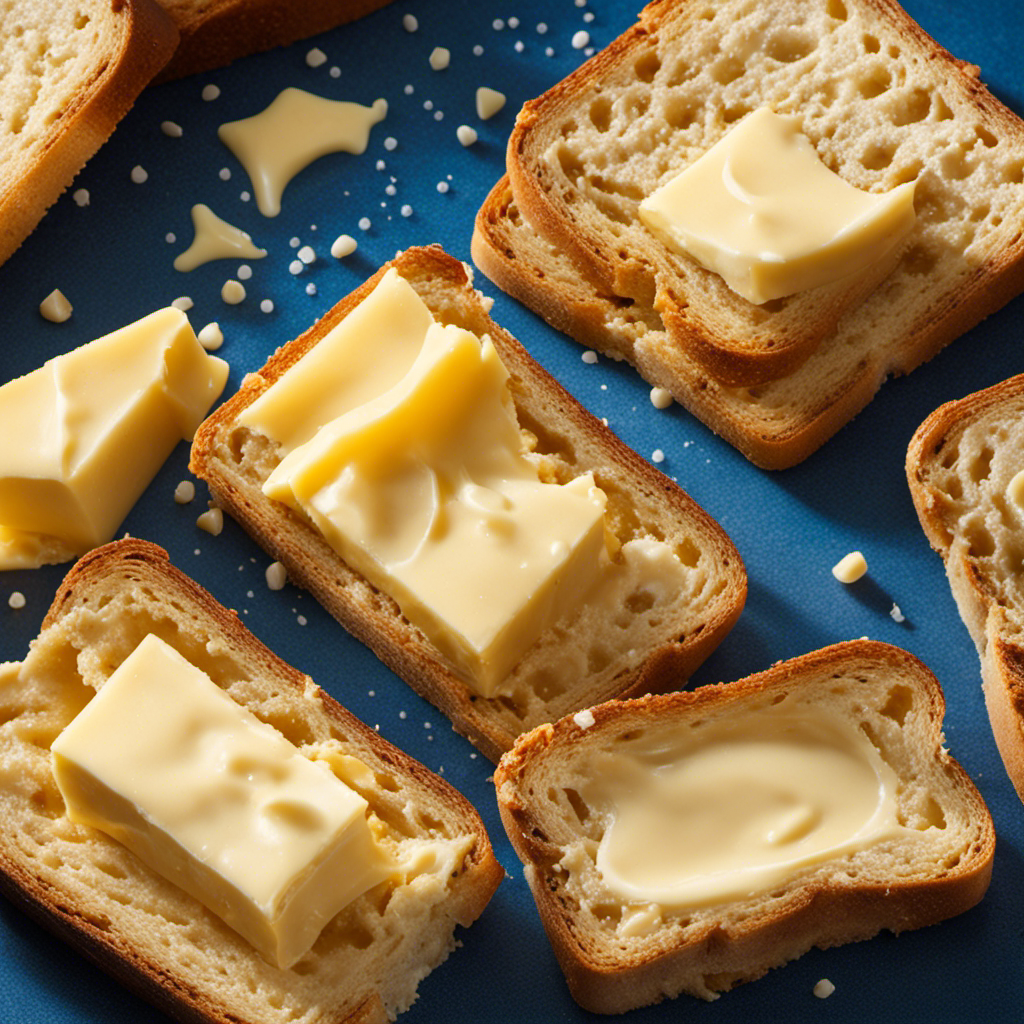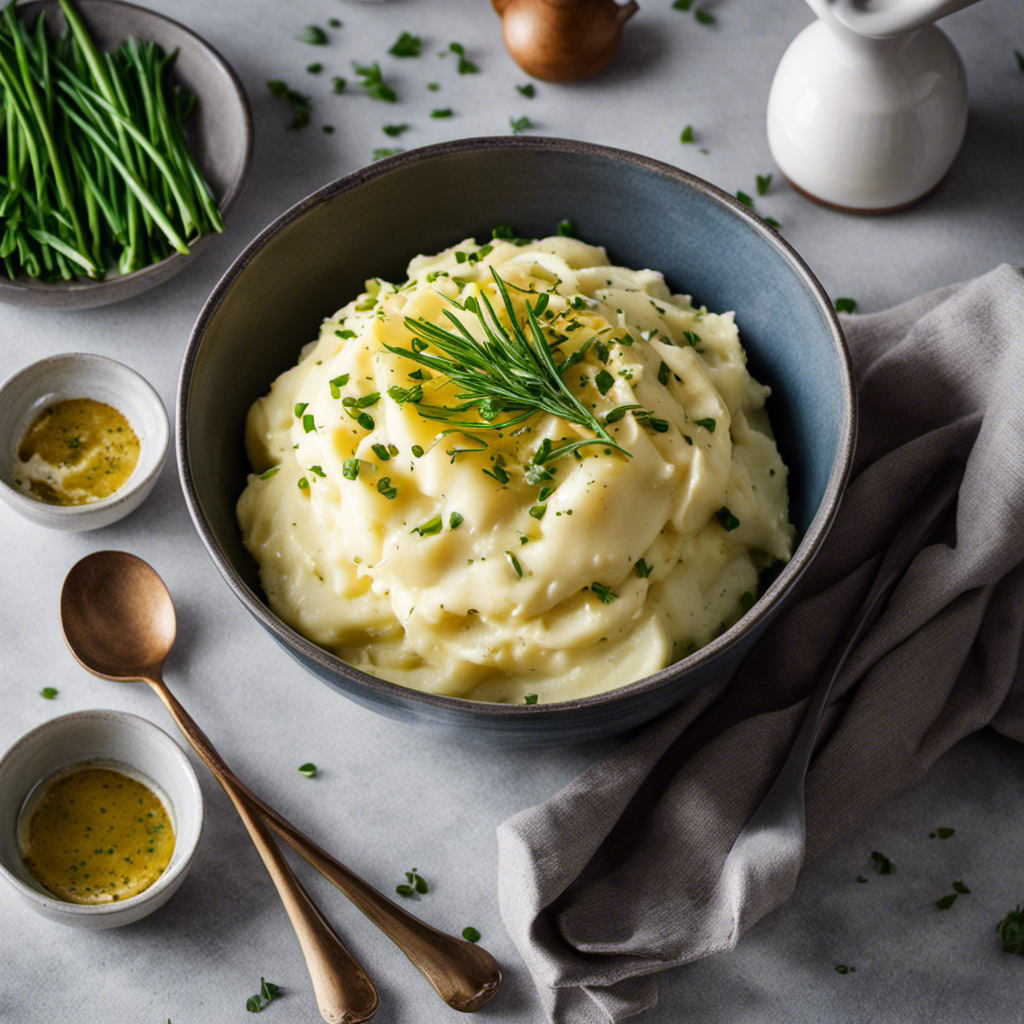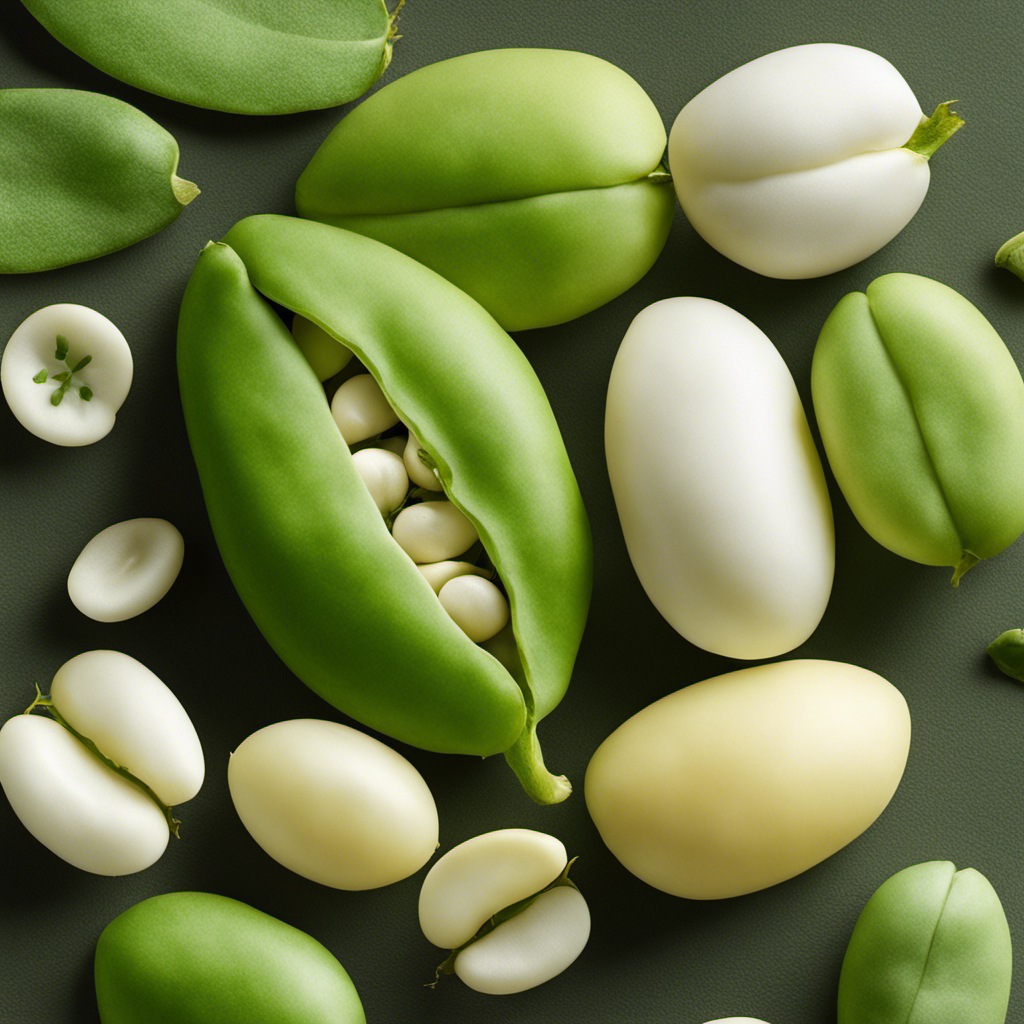I adore the velvety consistency and decadent taste of butter beans, but they can sometimes benefit from a bit of extra care in order to fully showcase their finest attributes. This is where blanching plays a vital role.
In just a few simple steps, you can transform these humble legumes into a tender and vibrant addition to any dish. So grab a pot, fill it with water, and let’s dive into the world of blanching butter beans.
Trust me, once you try it, you’ll never want to skip this step again.
Key Takeaways
- Look for plump, vibrant beans without blemishes or discoloration
- Blanching helps preserve color, texture, and flavor
- Timing is crucial to avoid tough or mushy beans
- Blanching retains valuable nutrients, intensifies flavor, and maintains crispness and color
Selecting and Preparing the Butter Beans
Before you start blanching the butter beans, make sure you’ve selected and prepared them properly.
When it comes to selecting fresh beans, look for ones that are plump, vibrant, and free from blemishes or discoloration. Freshness is key, so avoid beans that appear wrinkled or have a slimy texture.
Once you’ve chosen your beans, it’s time to prepare them for blanching. Start by rinsing the beans under cold water to remove any dirt or debris. Next, trim the ends and remove any strings if necessary.
Now, there are different ways to cook butter beans. You can simmer them in a pot of water until tender, or you can steam them for a healthier option. Another method is to roast them in the oven with some olive oil and seasonings for a deliciously crispy texture.
Experiment with different cooking techniques to discover your favorite way to enjoy these buttery delights.
Boiling the Water for Blanching
When it comes to blanching beans, there are a few key points to consider.
First, the water temperature for blanching is crucial. It should be boiling hot, but not too vigorous, to ensure that the beans are cooked evenly.
Second, the timing for the blanching process is important as well. Overcooking can lead to mushy beans, while undercooking can result in a tough texture.
Lastly, there are several benefits to blanching beans. It helps to preserve their color, texture, and flavor, while also making them easier to peel or freeze for future use.
Water Temperature for Blanching
To properly blanch butter beans, make sure the water temperature is hot enough. The ideal water temperature for blanching butter beans is around 180°F (82°C). This temperature ensures that the beans cook evenly and retain their vibrant color and firm texture.
It is important to maintain this temperature throughout the blanching process to achieve the best results. If the water is too cold, the beans will take longer to cook, resulting in a mushy texture. On the other hand, if the water is too hot, the beans may overcook and become too soft.
The blanching time for butter beans is typically around 3-5 minutes, depending on the size and freshness of the beans. This short blanching time helps to preserve their natural flavors and nutrients.
Now that we know the ideal water temperature, let’s move on to the timing for the blanching process.
Timing for Blanching Process
Make sure you keep an eye on the clock to ensure that you don’t overcook or undercook your blanched beans. Timing is crucial when it comes to blanching butter beans. You want them to be perfectly tender and still have a vibrant green color. So here are some timing tips to help you achieve the perfect blanched beans every time.
The first thing to remember is that the timing starts as soon as the water comes to a boil. You want to blanch the beans for about 2-3 minutes. This will give them enough time to cook through, but still maintain their crispness. Be careful not to leave them in the boiling water for too long, as they can quickly become mushy.
One common mistake is undercooking the beans. If you don’t blanch them for long enough, they will be tough and not enjoyable to eat. On the other hand, overcooking can result in mushy and discolored beans. So it’s important to find the right balance.
Another timing tip is to have an ice bath prepared and ready before you start blanching. As soon as the beans are done, transfer them immediately to the ice bath to stop the cooking process. This will help them retain their vibrant color and crispness.
Benefits of Blanching Beans
Blanching your beans helps to preserve their vibrant color and maintain their crispness. Here are four reasons why blanching is beneficial for your beans:
-
Nutritional advantages: Blanching beans helps to retain their valuable nutrients, such as vitamins and minerals, which can be lost during cooking. This ensures that you’re getting the maximum nutritional benefit from your beans.
-
Enhanced flavor profile: Blanching your beans before cooking can help to intensify their natural flavor. By quickly blanching them in boiling water and then shocking them in ice water, you lock in their taste, resulting in a more flavorful dish.
-
Improved texture: Blanching helps to maintain the crispness of beans, giving them a satisfying crunch. This makes them a great addition to salads or stir-fries, as they add texture and freshness.
-
Bright and vibrant appearance: Blanching beans helps to preserve their bright green color, making them visually appealing in any dish.
By blanching your beans, you can enjoy the nutritional advantages, enhanced flavor profile, improved texture, and vibrant appearance that they bring to your meals.
Now, let’s move on to the first step of blanching the butter beans.
Blanching the Butter Beans: Step 1
Once the water is boiling, you’ll need to blanch the butter beans for about 2 minutes.
Blanching is a cooking technique that involves briefly boiling vegetables and then immediately plunging them into ice water to halt the cooking process. This method has several benefits.
First, blanching helps to preserve the vibrant color of the beans, making them visually appealing.
Second, it helps to remove any dirt or impurities from the surface of the beans.
Lastly, blanching also helps to soften the outer skin of the beans, making them easier to peel if desired.
To blanch the butter beans, simply drop them into the boiling water and let them cook for 2 minutes. Then, transfer them to a bowl of ice water to cool down. This will ensure that the beans retain their bright green color and crisp texture.
In the next step, we will move on to preparing the butter beans for cooking.
Blanching the Butter Beans: Step 2
When it comes to blanching butter beans, there are a few key points to keep in mind.
First, the optimal blanching time is crucial for achieving perfectly cooked beans.
Second, preserving the vibrant color and tender texture of the beans requires careful attention.
And finally, the importance of using an ice bath cannot be overstated, as it quickly stops the cooking process and helps to maintain the beans’ crispness.
Let’s dive into these aspects of blanching the butter beans and learn how to achieve the best results.
Optimal Blanching Time
To achieve the perfect texture, you should aim for a blanching time of about two minutes for butter beans.
Blanching is a cooking technique that involves briefly immersing food in boiling water, and then transferring it to ice water to stop the cooking process. This method helps retain the vibrant color and firmness of the beans, making them a delightful addition to any dish.
Compared to other cooking methods, blanching offers several advantages. Firstly, it preserves the nutrients and natural flavors of the beans. Secondly, it helps remove any dirt or impurities from the surface. Thirdly, blanching helps soften the beans slightly, making them easier to digest. Lastly, it sets the stage for further cooking or freezing, allowing you to store them for later use.
Preserving Color and Texture
Preserving the vibrant color and firmness of the beans is essential for creating visually appealing and delicious dishes. When blanching butter beans, it’s important to use methods that preserve the nutrients and maintain the beans’ natural color and texture.
Traditional blanching involves boiling the beans for a short period and then transferring them to an ice bath to stop the cooking process. However, there are alternative blanching methods that can also yield excellent results.
One such method is steam blanching, where the beans are steamed instead of boiled. This helps to retain more nutrients and prevents the beans from becoming mushy. Another alternative is blanching in the microwave, which is a quicker method that also helps to preserve the vibrant color and firmness of the beans.
Now, let’s move on to the importance of the ice bath in the blanching process.
Importance of Ice Bath
To maintain the vibrant color and firm texture of your beans, it’s crucial that you use an ice bath after blanching. The rapid cooling process stops the cooking immediately and helps retain the beans’ natural beauty and crunchiness.
Here are four reasons why an ice bath is essential for blanched butter beans:
-
Preserves color: Plunging the beans into icy water halts the enzyme activity that causes color loss. This ensures that your beans stay bright and appetizing.
-
Maintains texture: Quick cooling prevents overcooking and keeps the beans firm and tender. It helps preserve their natural crunch, making them perfect for salads or side dishes.
-
Enhances flavor: By stopping the cooking process promptly, an ice bath locks in the beans’ natural flavors, ensuring they taste fresh and delicious.
-
Saves time: Using an ice bath speeds up the cooling process, allowing you to move on to the next step of your recipe without any delay.
While there may be alternatives to using an ice bath, none can match its effectiveness in quickly cooling blanched butter beans. So, make sure to have a bowl of ice water ready to maintain the quality of your beans.
Draining and Cooling the Butter Beans
First, drain the hot water from the pot and then cool the butter beans under cold running water. This step is crucial in the blanching process as it stops the cooking and helps retain the vibrant green color of the beans.
As the cool water washes over the beans, you can feel the change in temperature, and the beans become refreshing to the touch. Once drained and cooled, these blanched butter beans can be used in a variety of dishes.
They make a great addition to salads, adding a burst of freshness and texture. You can also toss them with some olive oil, garlic, and herbs for a simple yet delicious side dish.
The possibilities are endless, so get creative and enjoy the versatility of blanched butter beans!
Storing and Using Blanch Butter Beans
When storing blanched butter beans, you can place them in an airtight container and keep them in the refrigerator for up to a week. This ensures that they stay fresh and delicious for future use.
Here are some creative recipes and storing techniques to make the most of your blanched butter beans:
-
Freezing: If you want to store them for a longer period, freezing is a great option. Simply place the blanched butter beans in a freezer-safe bag or container and store them in the freezer for up to six months.
-
Soups and stews: Add blanched butter beans to your favorite soups and stews for a hearty and nutritious addition. They add a creamy texture and a subtle nutty flavor to any dish.
-
Salads: Toss blanched butter beans into your salads for an extra dose of protein and fiber. They pair well with fresh vegetables and a tangy vinaigrette.
-
Purees and dips: Blend blanched butter beans with garlic, lemon juice, and olive oil to create a creamy and delicious puree or dip. It’s a healthy alternative to traditional dips like hummus.
With these storing techniques and creative recipes, you can enjoy the goodness of blanched butter beans in various dishes all year round.
Frequently Asked Questions
How Long Do Butter Beans Need to Soak Before Blanching?
Soaking time for butter beans before blanching varies depending on their freshness. To ensure they cook evenly, soak them in cold water for at least 4 hours or overnight. This prepares them for the blanching process, resulting in a deliciously tender texture.
Can I Blanch Butter Beans Without Removing Their Skins?
Blanching whole butter beans without removing their skins is possible and has its benefits. The skins help retain the beans’ shape and texture while adding a slight nuttiness. Plus, it saves time and effort!
Can I Freeze Blanched Butter Beans?
Yes, you can freeze blanched butter beans. Freezing helps preserve their freshness and extends their shelf life. Besides enjoying them as a side dish, you can use blanched butter beans in soups, salads, and casseroles for added protein and creaminess.
How Long Can I Store Blanched Butter Beans in the Refrigerator?
Blanched butter beans can be stored in the refrigerator for up to 5 days. They are versatile and can be used in various recipes, like salads, soups, and stews. So go ahead and enjoy their creamy goodness!
Can I Use Blanched Butter Beans in Salads or Soups?
Yes, you can definitely use blanched butter beans in salads or soups. They add a creamy texture and nutty flavor that complements the other ingredients. You can also incorporate them into pasta dishes or use them to make delicious dips and spreads.
Conclusion
In conclusion, blanching butter beans is a simple and rewarding process. By following these steps, you can enjoy tender and flavorful beans in no time.
So why not dive in and give it a try? Let the butter beans dance in the boiling water, their vibrant green color and delicate taste will be a feast for your senses.
Don’t miss out on this delightful culinary adventure. Get cooking and savor the magic of blanched butter beans!
